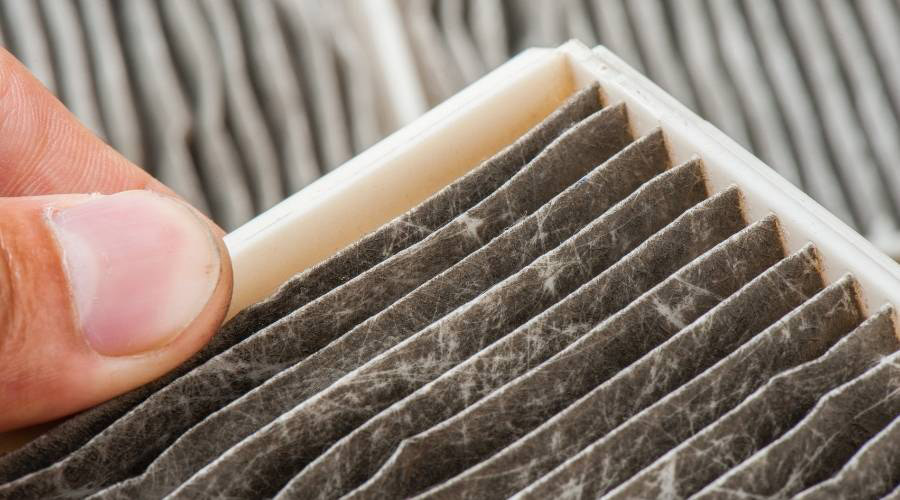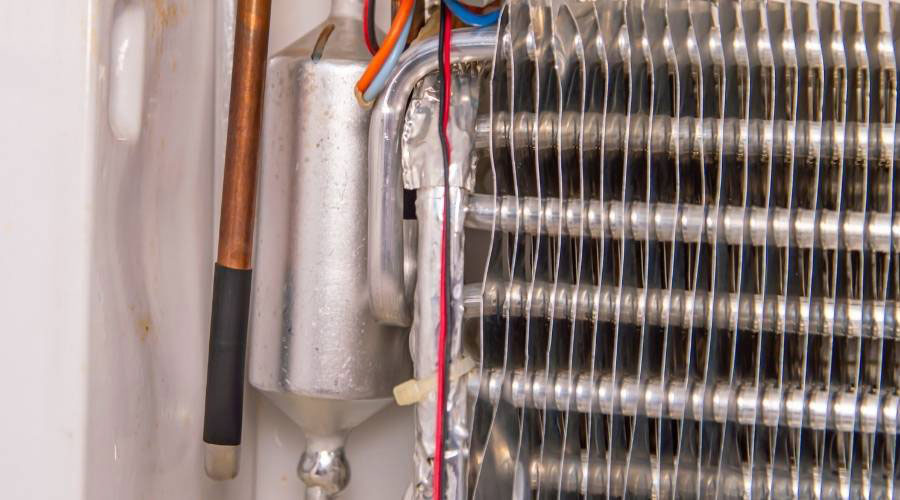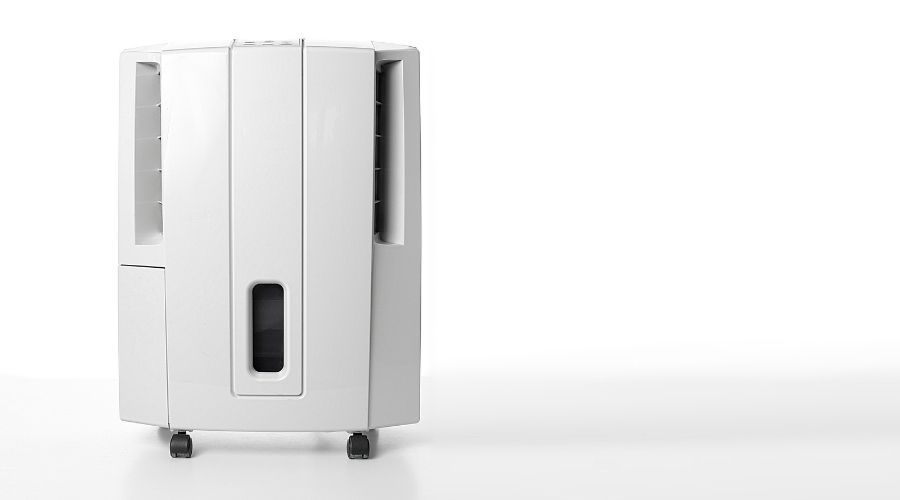
You can purchase a dehumidifier to remove moisture from the air. This allows the air to become not only cooler but also slightly purer.
Dehumidifiers are great for people with allergies or asthma. But after a long period of use, your dehumidifier might start to leak. When this happens, you would generally ask yourself, where is the leak, and can I fix it?
When you find your dehumidifier leaking, it usually is because of a few things. Those things being;
- The water collection bucket is either broken, cracked, or out of place
- The drain tube is blocked with debris or sediment
- The coils that condense the air are frozen over
- The drain tube is loose or damaged in some way
- The float switch inside of the dehumidifier is stuck, not allowing the device to turn off
- The water pump is broken or blocked up with debris or sediment
Any one of these can cause your dehumidifier to leak. However, the dehumidifier can all be easily fixable.
As you continue to read this article, it will go over the potential reasons your dehumidifier is leaking above. Along with that, it will also give a quick rundown of how you can go about fixing each of those issues.
Why Is My Portable Dehumidifier Leaking?
When it comes to dehumidifiers, there can be many reasons why they can leak onto the floor. Whether it is leaking water or refrigerant on the floor, this article will go over why that is happening. Along with that, it will also give examples of how you can go about fixing each of these issues.
1. Water Collection Bucket Is Broken Or Cracked
Every portable dehumidifier has a water collection bucket at the bottom of the device. When it starts to leak, this should be the first thing you need to check.
If the water collection bucket is leaking water without being complete, there is a chance that it may be broken or cracked from previous cleaning sessions.
How To Check & See If It Is Broken
Step 1: The best way to check if the water collection bucket is broken or cracked is as follows. Firstly, turn off your portable dehumidifier. Then you will need to remove and empty the water collection bucket.
Step 2: Once you have opened it, you need to clean it to remove any mildew or sediment. Cleaning the tank will allow you to examine the water collection bucket thoroughly.
Step 3: You can do something dry outside the container after cleaning the water collection bucket. Then, fill the bucket halfway with water, ensuring the outside is dry.
Step 4: After that, lift the bucket and look for pooling drops of water to pinpoint areas where it can leak.
Step 5: If the water collection bucket leaks, you will likely need to replace it. The best place you should go to replace the broken container is the manufacturer’s website.
There you will be able to find most of the spare parts you can purchase to replace any broken pieces of your dehumidifier.
2. Water Collection Bucket Is Not Set Properly
After seeing if the water collection bucket is broken, you next check if you have the collection bucket correctly in place. Some portable dehumidifiers require a tight seal between the bucket and the draining tube.
Make sure that whenever you put the water collection bucket back into your dehumidifier, it is firmly in place and on the tracks it was made to slide into.
3. Check If The Drain Hose Is Blocked Up
The next thing you should check if your portable dehumidifier is still leaking is the drainage hose. Some dehumidifiers fixed and mounted to a wall have a drainage hose that leads from the device to a drain somewhere.
At the same time, portable others may still have a hose that leads from the coils to the water collection bucket at the bottom.
Both types of drainage hoses can get clogged up with debris or sediment. Remove this tobe and take it to your sink and clean it out. Use hot water, sope, and possibly some durable pipe cleaners to scrub the inside of the drainage hose.
Once you have done this, dry the top tube inside where you plan to attach the hose back onto the dehumidifier. This will help assure a firm connection.
4. Drainage Hose Is Loose or Broken
This falls in line with the previous step. However, if the hose is loose, you can sometimes see that right away. If this is the case, try to reattach the hose as firmly as possible. If the hose does not stay in place, try cleaning it and reapplying it.
When cleaning the house, you might sometimes find a leak in the hose itself. Unfortunately, if this is the case, you will need to replace the hose by going to your dehumidifier’s manufacturer and ordering a new hose.
5. Condensing Coils Are Iced Over
While you are going through figuring out why your dehumidifier is leaking, a common and easily identifiable reason is ice buildup on the condenser coils. The coils attached to the condenser have compressed refrigerant inside of them.
This refrigerant gets colder the more it is condensed. It will make the coils very cold and chill the air around them.
During this process, the water vapor in the air will cool, forming water droplets on the condenser coils.
The atmosphere is then blown back into the room where the portable dehumidifier works. This is essentially how your dehumidifier removes humidity and water from the air, thus making it more comfortable.
When the condenser coils have a buildup of ice, there can be quite a few reasons. The following possible issues that can cause this are; a dirty filter, dirty evaporator coils, the dehumidifier is set to operate at too low of a temperature for an extended time, and not enough refrigerant in the compressor.

Filter:
Most dehumidifiers have a washable filter that comes with them. If you neglect to clean the filter regularly, it will lead to the airflow being restricted. This makes the compressor work harder to cool the air around the coils. That being said, the cleaning process is relatively simple.
Please remove the air filter and first vacuum it out of most of the dust built upon it. Then take the filter to your sink and wash it with warm water rubbing the filter with your hands to clean it the rest of the way. Once that is done, allow it to dry completely before placing it back into the dehumidifier.

Evaporator Coils:
With the same reasoning, the evaporator coils inside your dehumidifier can also be dirty and caked with dust and debris. In the same way, a dirty filter will cause the condenser to work harder and ice up, and so will dirty evaporator coils.
To clean the evaporator coils, you will need to brush them with a soft bristle brush from your vacuum cleaner. Otherwise, you can use any cleaning brush to clean off the evaporator coils.
When doing this, avoid bending any fins on the evaporator coil. They tend to be very delicate and can turn easily, reducing airflow.
Temperature Too Low For Too Long:
Another cause of ice buildup on the condenser coils is simply using the dehumidifier at too low a temperature for long periods. Using your portable dehumidifier below 65 degrees Fahrenheit can lead to ice buildup after long periods of being used at this temperature or lower.
This is because the temperature you set on your dehumidifier is the target temperature you want the air to be when it comes out of the device, making the condenser and the refrigerant inside the coils set lower close to the temperature at which water freezes.
It will eventually lead to the water that forms on the coils cooling down and, over time, forming ice crystals on the coil.
So how should you avoid the issue? Please do not use your dehumidifier to 65 degrees unless it has a defrost setting and low-temperature mode.

Low Levels Of Refrigerant:
The last reason your dehumidifier forms ice on the condenser coils is the lack of refrigerant. A refrigerant is used as your dehumidifier to remove water from the air. This refrigerant is slowly expelled during this process.
Eventually, there will not be enough to cool and condense the water vapor in the air effectively. This makes the condenser work harder to keep what refrigerant it does cold enough to make that process happen. This leads to ice buildup.
If all of the other potential reasons that lead to ice buildup are taken care of, and your dehumidifier is still producing ice on the condenser coils, this is the reason. To refill the refrigerant inside your dehumidifier, you must consult your manufacturers and determine if your device uses freon or Puron.
Once this is done, you will need to call an HVAC professional in your area to come and refill your dehumidifier with the required chemical.
This is because the required chemicals have adverse effects and high toxicity. Freon and Puron sale is prohibited to the public, and only HVAC professionals are allowed to come and recharge any device that requires them.
6. Overflow Switch Has Stopped Working Or Is Stuck
The last thing that is making your dehumidifier leak is the overflow switch. This part of the dehumidifier is there to turn off the device when the water collection bucket is full and needs to be emptied.
If the button is broken or is stuck, the unit will continue to dehumidify the air and collect water. However, this eventually leads to leaking and a puddle underneath your dehumidifier.
The issue with knowing if the overflow switch is broken or not is more complicated than just looking at it, and the best way to determine whether the overflow switch is still working is with a volt-ohm meter.
You will need to unplug your device to test your dehumidifier with an ohm or voltage meter. Then you will need to locate the overflow switch and remove it by disconnecting any leads from the controller.
Then, take the volt-ohm meter, set it to the RX1 scale, and connect it to the leads’ spots. If the scales on the meter do not move, you have a broken switch that will need to be replaced. If they do move, the control is dirty and must be cleaned thoroughly before placing it back into your dehumidifier.
Final Thoughts
When it comes to dehumidifiers leaking, there can be quite a few reasons why. Every excuse that can lead to these reasons has been covered, along with ways to fix them.







